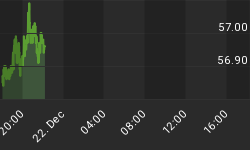GDP beat second quarter estimates of 1 percent easily. However, the BEA revised first quarter growth down from 1.7% to 1.1%.
Is this a good thing, a bad thing, or nonsense?
The correct answer is "nonsense". One look at BEA GDP Release is all it takes to determine the answer.
The price index for gross domestic purchases, which measures prices paid by U.S. residents, increased 0.3 percent in the second quarter, compared with an increase of 1.2 percent in the first. Excluding food and energy prices, the price index for gross domestic purchases increased 0.8 percent in the second quarter compared with 1.4 percent in the first.
How Convenient
My friend "BC" says
How convenient, otherwise real GDP would have printed at 0.8%, prices constant.
Yet, the yoy rate of real final sales per capita is below 1% for the second quarter in a row, whereas the second quarter annualized rate is near contracting. Had the deflator been reported at the rate in Q1, the yoy and 2-qtr. annualized real final sales per capita rates would have been reported as contracting.
Doug Short at Advisor Perspectives came up with similar conclusions via email.
Doug writes
- Official GDP with the BEA's GDP deflator (0.71% which is rounded in the popular press to 0.7%) gives us the official GDP of 1.67%, which rounds to 1.7%
- GDP with a hypothetical 1.6% deflator (as forecast by Briefing.com) would have been 0.78%, which rounds to 0.8%.
- GDP with the average deflator over the past 14 quarters (which is 1.75%) would have been 0.64%, which rounds to 0.6%.















